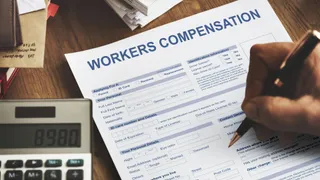M&A might be logical but can also result in downgrades: S&P
There has been a surge of mergers and acquisitions (M&A) activity since mid-August 2016—but the outcome of such transactions may have mixed results from a credit standpoint, according to S&P Global Ratings.
Four large deals have been announced since mid-August, including Arch Capital’s intention to purchase United Guaranty for about $3.4 billion; Shenzhen Qianhai Financial Holdings and Shenzhen Investment Holdings acquisition of ACR Capital Holdings for $1 billion; Sompo Holdings acquisition of Endurance Specialty for $6.3 billion; and NN Group’s $2.7 billion bid for Delta Lloyd.
On these four transactions, S&P has made several rating actions, including placing Asia Capital Reinsurance Group on CreditWatch negative, due to concerns over the new shareholders’ lack of a track record when making overseas reinsurance investments.
Arch Capital Group’s outlook was also negative following the announcement of its acquisition, while United Guaranty was placed on CreditWatch positive. The negative action was placed due to “inherent execution risk” and a significant change in business mix pursuant to the acquisition raising concentration risk, S&P said.
In the past, in terms of both equity returns and ratings momentum, S&P said it has observed a negative bias among acquirers since 2000, with the other two-thirds of M&A deals failing to improve financial strength enough to lead it to upgrade the buyer.
When assessing the possible impact of an acquisition or merger on the creditworthiness of an insurer, S&P said it focuses on how the deal will benefit—or weaken—prospective capital, the strategic rationale and impact on the competitive position, what might the future risk appetite of the combined company look like, and finally how high is the execution or integration risk.
S&P further notes that synergies are often a driving rationale for acquirers, either through expense saving or business overlap that provides opportunities for cross-selling. However, these things are rarely factored into ratings until they have been realised.
S&P had expected that the second half of 2016 would bring more consolidations, driven by record high capital in many segments, scant opportunities for organic growth, low or uncertain investment returns in domestic markets, evolving regulation and favourable financing conditions.
Already registered?
Login to your account
If you don't have a login or your access has expired, you will need to purchase a subscription to gain access to this article, including all our online content.
For more information on individual annual subscriptions for full paid access and corporate subscription options please contact us.
To request a FREE 2-week trial subscription, please signup.
NOTE - this can take up to 48hrs to be approved.
For multi-user price options, or to check if your company has an existing subscription that we can add you to for FREE, please email Adrian Tapping at atapping@newtonmedia.co.uk
Editor's picks
Editor's picks
More articles
Copyright © intelligentinsurer.com 2024 | Headless Content Management with Blaze

